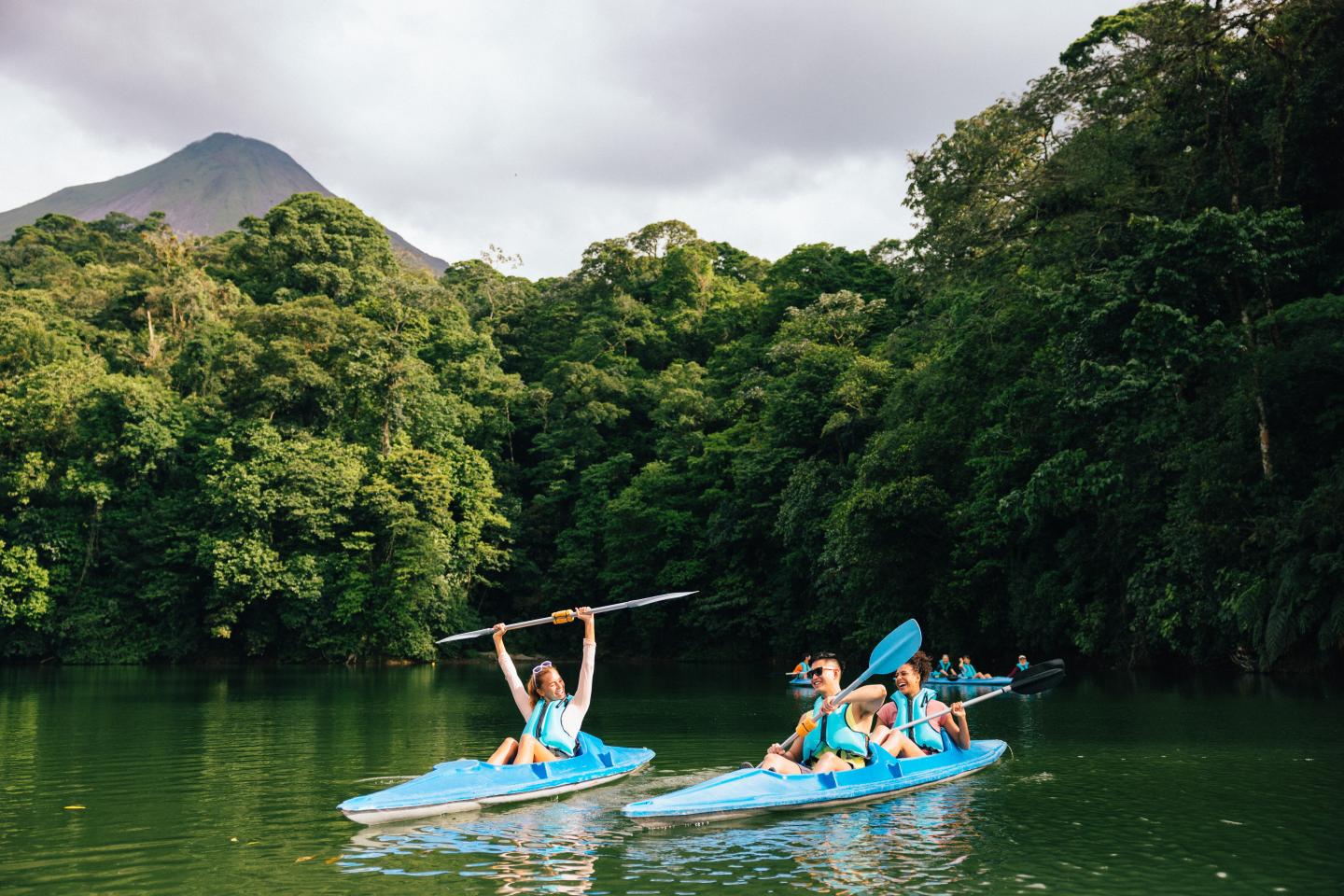climbing and rappelling in Costa Rica
Climbing and rappelling test the physical and mental endurance of those willing to master high altitudes. Tours lasting from one day to several days can be found throughout the country.

vertical challenge
variations
Experts will teach techniques on rope climbing, vertical rescue, down rock face rappelling, as well as zip lining.
near orotina
One of the tallest stationary climbing rock faces in the world, at 246 ft., is located in the Tarcoles River canyon. It is suitable for both beginners and experts.
the blanco river canyon
Climbing and rappelling through the treetops in Guapiles, offers the crossing of various platforms at different points throughout the forest and descending along the canyon’s rock face.
up along the rock face
The town of Cachi, in the province of Cartago, has several rock faces and climbing sites where the beautiful forest sights are amazing.

at the top
Scaling in Chirripo National Park is a serious challenge. It is the second highest peak in Central America, measuring 12,500 ft. above sea level and is located in the Talamanca Mountain Range. It is the ultimate experience in hiking. In general, it is very wet between May and December and turns very dry and sunny from January to April. Higher elevations experience a range of rapidly changing weather, including wind gusts, frost, constant drizzle, and abrupt temperature changes. However, for those willing to make the climb, the surrounding view is beyond compare. Climbers can observe many lakes and valleys such as the Moraine Valley, Los Lagos Valley, and Los Conejos Valley.
safety recommendations
- Wear comfortable and durable shoes and clothes, a billed hat, sun block, repellent, and take a bottle of water. If the weather is cold, bring a light sweater or jacket and if you expect to come into contact with water, wear appropriate shoes or sandals, and clothes that will dry quickly (surf material or synthetic) and a change of clothes.
- Never climb alone. Stay within your limits and don’t improvise. Don’t pressure yourself, stay relaxed. Pay attention to what you’re doing and don’t get distracted.
- If you are a beginner, a few-hour course will teach you the basic techniques for climbing, as well as how to tie knots and use common anchor techniques.
- The entire process of rappelling, from anchoring to the core of your rope, from person to team, constitutes a chain. If one link fails, the whole chain fails.
- Rappelling can be the quickest and safest way to descend certain stretches. However, sometimes it is not, even when you have all the resources available to you. It is a method used for when climbing down is impossible.
Costa Rica's best places for climbing and rappelling
On the map you'll find Costa Rica's tourism regions, where you can participate in these activities. For more information on any of these activities, contact your travel agent or hotel.

















